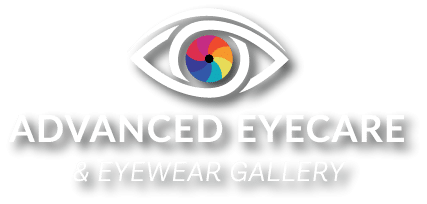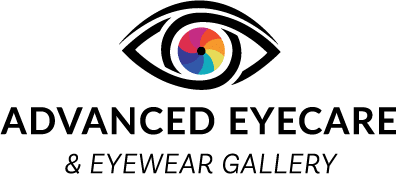Dr. Turk’s Personal Story of Living with Diabetes and His Passion for
Helping His Patients Manage Its Effects on Their Vision
Having been diagnosed with type 1 diabetes at age 9, Dr. Mark Turk knows all too well the havoc the disease can wreak on the human body. He lives with an insulin pump attached to him 24 hours a day, and for more than 40 years, he has experienced the literal highs and lows that are a part of living with the disease.

Although it hasn’t always been easy living with diabetes, Dr. Turk has managed to enjoy a happy and active life. He was very active and involved in sports in his earlier years and is now a father to his young son, Charlie. He enjoys coaching Charlie’s little league baseball team, hiking and being outdoors, and he is a devoted UAB alumnus who attends all the Blazer sporting events he possibly can.
It was his diabetes that sparked an interest that soon became a passion and resulted in a career. Shortly after his diagnosis, Dr. Turk began to develop an interest in the disease and the effects diabetes can have on the human body – particularly the eyes. He felt led to a career in optometry where he could treat patients with diabetic retinopathy and other diseases of the eye. He opened Advanced Eyecare in 2001 and has spent more than two decades pursuing his passion of caring for his patients by providing vision correction as well as diagnosing, treating and managing eye disease.
Dr. Turk educates his diabetic patients on the damage the disease can cause to the eyes over time. Diabetic retinopathy, diabetic macular edema, cataracts, and glaucoma are some conditions diabetes can bring on, all of which can lead to poor vision or even blindness. However, diligent management of their diabetes and expert eye care are steps patients can take to prevent diabetic eye disease or keep it from getting worse.
Here are some commonly asked questions about diabetes and the eyes:
How does diabetes affect the eyes?
Diabetes affects the eyes when blood glucose, also called blood sugar, is too high.
If blood glucose is high for a few days or weeks, possibly during a time when a patient’s diabetes medication is being adjusted, the patient may experience blurry vision. This is because high glucose can change fluid levels or cause swelling in the tissues of the eyes making it difficult to focus. This type of blurry vision is temporary and goes away when the glucose level returns to the normal range.
If blood glucose stays high over time, it can damage the tiny blood vessels in the back of the eyes. This damage can begin during prediabetes, when blood glucose is higher than normal, but not high enough for the individual to have been diagnosed with diabetes. These damaged blood vessels may leak fluid and cause swelling. The body may also begin to form new, weak blood vessels that can bleed into the middle part of the eye. This can lead to scarring or dangerously high pressure inside the eye.
What are some diabetes-related eye diseases or conditions?
- Diabetic retinopathy – In the eye, the retina senses light and turns it into signals that the brain decodes, enabling us to see the world around us. Damaged blood vessels can harm the retina, causing a disease called diabetic retinopathy. In early diabetic retinopathy, blood vessels can weaken, bulge, or leak into the retina. This stage is called nonproliferative diabetic retinopathy. As the disease worsens, some blood vessels may close off, which causes new blood vessels to form on the surface of the retina. This stage is called proliferative diabetic retinopathy. These abnormal new blood vessels result in serious vision problems.
- Diabetic macular edema – The macula is the part of the retina that is needed for tasks like reading, driving, and seeing faces.Diabetes can cause swelling in the macula, which is called diabetic macular edema. This condition usually occurs in people who already have other signs of diabetic retinopathy and it can lead to partial vision loss or blindness over time.
- Glaucoma – Glaucoma is a group of eye diseases that can damage the optic nerve, which is actually the group of nerves that connects the eye to the brain. Having diabetes doubles a person’s chances of having glaucoma, which can lead to vision loss and blindness if not treated early.
- Cataracts – When they are functioning correctly, the lenses within our eyes are clear and they help to provide sharp vision. However, they tend to become cloudy as we age. In people with diabetes, researchers believe high glucose levels cause deposits to build up in the lenses of the eye forming a cataract. Diabetics are more likely to develop cataracts and develop them at an earlier age than people without diabetes.
How common is diabetic eye disease?
Diabetic retinopathy is the most common cause of vision loss in people with diabetes. It occurs in about one in three diabetics who are older than age 40 and already have some signs of diabetic retinopathy. Diagnosis and treatment can reduce the risk of blindness by 95 percent.
A diabetic’s chances of developing glaucoma or cataracts is about twice that of someone without diabetes.
What increases the chances of developing diabetic eye disease?
Untreated high blood glucose, untreated high blood pressure, high blood cholesterol and smoking may raise a diabetic’s risk of developing diabetic eye disease. Also, a person’s chances of developing diabetic eye disease increase the longer that person has diabetes.
African Americans, American Indians, Alaska Natives, Hispanics/Latinos, Pacific Islanders, and older adults are at greater risk of losing vision or going blind from diabetes.
Women with diabetes can develop eye problems very quickly during pregnancy. If diabetic retinopathy is already present, pregnancy can exacerbate it. Often, the woman’s health care team will suggest regular eye exams during pregnancy to catch and treat problems early and protect her vision.
For women who do not normally have diabetes but develop it during pregnancy, their condition is called gestational diabetes. Gestational diabetes does not usually cause eye problems.
What are the symptoms of diabetic eye disease?
Often there are no early symptoms of diabetic eye disease. There may be no pain and no change in vision as damage begins to occur inside the eyes, particularly with diabetic retinopathy.
When symptoms do occur, they may include blurry or wavy vision, frequently changing vision (sometimes from day to day), dark areas or vision loss, poor color vision, spots or dark strings (also called floaters), or flashes of light.
If experiencing any of these symptoms, it is best to arrange an eye exam as soon as possible.
How do doctors diagnose eye problems from diabetes?
The best way to check for eye problems from diabetes is by having a full, dilated eye exam. During this exam, the eyes will be dilated, which involves placing drops in them to widen the pupils. This allows for examination of a larger area at the back of each eye using a special magnifying lens.
Additionally, vision will be tested, the pressure in the eyes will be measured, and other tests might be suggested, depending on the patient’s health history.
Most people with diabetes should see an eye care professional once a year for a complete eye exam, but sometimes a different plan is necessary. A person’s health, the type of diabetes they have, and the length of time since their original diagnosis all play a part in an individual’s eye health maintenance plan.
Eye exam guidelines for different types of diabetes:
Type 1: Yearly eye exams should start within 5 years of diagnosis.
Type 2: Yearly eye exams should start at the time of diagnosis.
Pregnancy: Women with type 1 and type 2 diabetes need an eye exam before becoming pregnant or within the first 3 months of their pregnancy. It may be determined that it is necessary to repeat the exam later in the pregnancy and until one year post-delivery.
Women who develop gestational diabetes usually do not need an eye exam because gestational diabetes does not cause the development of diabetic eye disease.
How do doctors treat diabetic eye disease?
Treatment of diabetic eye disease may mean eye exams are suggested more often than once per year. Additionally, taking steps to manage the patient’s diabetes ABCs, which include A1c, blood pressure, and cholesterol; as well as quitting smoking, will be encouraged.

